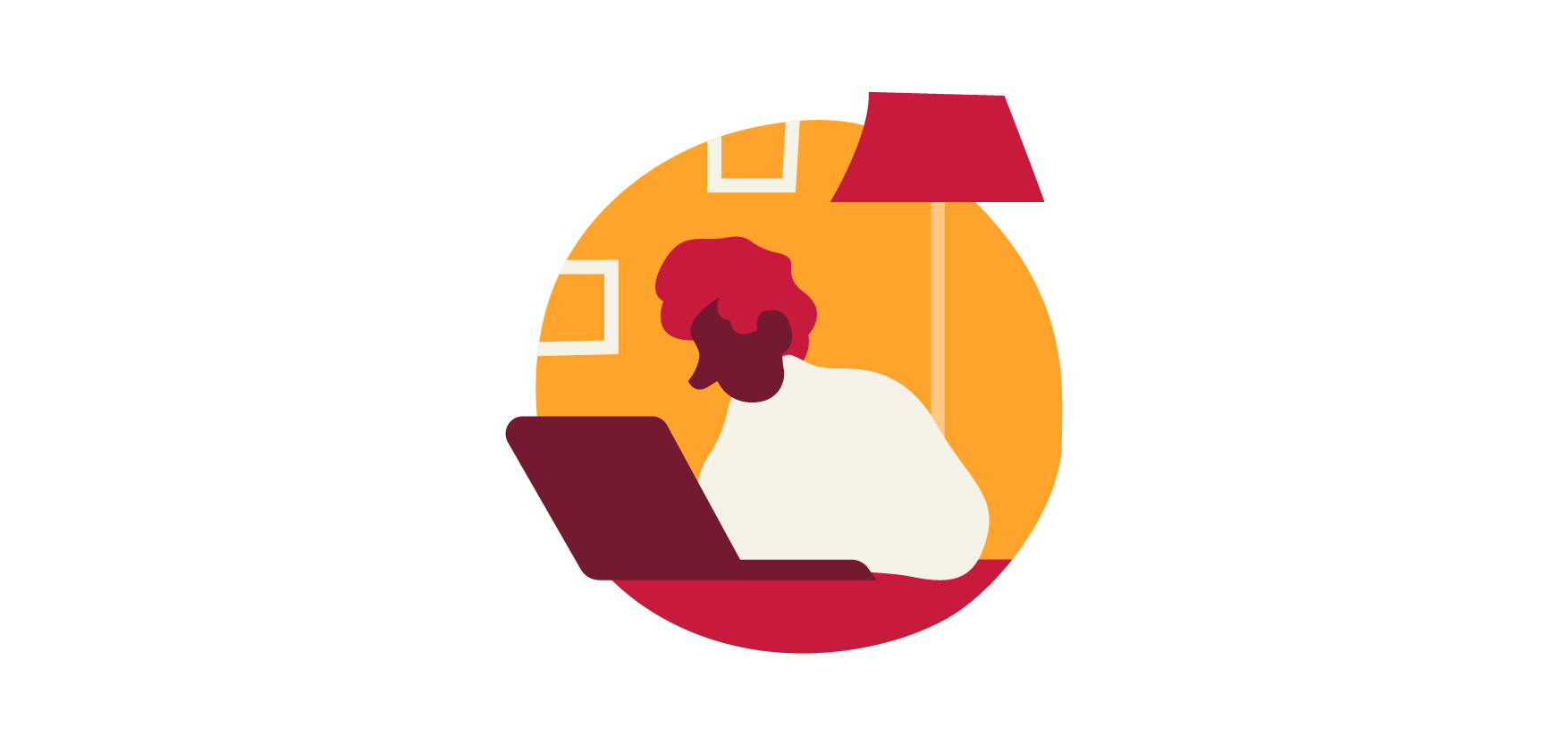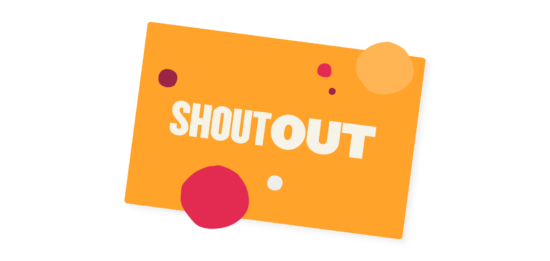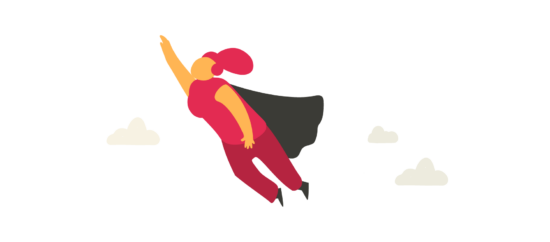Introduction
No doubt about it—we are experiencing an era of change and upheaval.
Many of us expected the world to return to normalcy after just a few weeks of lockdown in 2020. We hoped for the same in 2021. Now, we’re in 2022, and most of us have admitted to ourselves that a return to what we knew isn’t going to happen. We’re in a time of enormous change—technologically, socially, and professionally.
HR is at the crux of all these changes in the workplace and world of business. Top-level findings from research we conducted with Fiverr confirmed people are leaving their jobs rapidly in favor of more flexibility at work. The Great Resignation isn’t limited to people in specific roles looking for a change.
People of all roles are leaving, and research shows that turnover is nearly equal across every industry. In many ways, these changes are due to COVID modifying people’s expectations and priorities. On the other hand, many of these changes have been a long time coming—COVID just sped up the process.
Unfortunately, companies worldwide are struggling to find ways to fill talent gaps. They’re also reeling from the impact turnover has on the organization. According to our survey findings, HR leaders and hiring managers see eye-to-eye on the impact of turnover on the organization. The cost of training new people negatively impacts the employee experience and workflows. Morale and productivity are taking a hit due to the skills gap and the time it takes to find replacements when people leave.

During this time of great uncertainty and extreme change, three of the most pressing challenges facing HR are the:
- Future of work: What does the workplace look like in this “new normal”?
- Skills shortage: How does a company fill roles with people who possess the skills they need?
- Evolving employee health and safety standards: Where and how can HR ensure a safe and healthy work environment?
HR Technology is poised to help HR solve business’ most pressing challenges.
In this guide, we’ll explore why it’s essential to have access to centralized HR tools and resources and how HR technology will enable your business to flex and successfully adapt to today’s ever-changing work environment.
Modern HR dashboards that fit your needs
Recruiting, onboarding, training, payroll, and performance systems are inefficient without one dashboard that allows users to get what they need when they need it and translates data between systems.
By contrast, a streamlined dashboard and user experience can engage your people and enable better decision-making. Thankfully, modern HR systems with intuitive workflows and friendly user interfaces that streamline core HR processes have replaced clunky systems filled with tedious tasks.
Modern HRIS solutions don’t require customization and are adaptable to company requirements. Features aim to integrate easily into the daily work routine and simplify approval cycles and other processes.
Some of the features that you’ll find in a modern HRIS / HCM dashboard include:
- A 360-degree view of the team
- Bots that can answer standard questions
- Employee-owned time management
- Flexible onboarding workflows
- Surveys to gather critical input from your people
- Compensation workflows
Modern HR tech streamlines core processes within one system and provides friendly dashboards of data based on each user’s needs. Dashboards offer a simple way to inform better decisions, review KPIs, such as skills shortages, and provide instant access to crucial location-based safety information (e.g., vaccination mandates and compliance). Today’s HR teams need data to analyze their current situation and plan for the future. Dashboards with key data empower HR to tackle the most significant challenges they face today.
Simplifying with an integrated dashboard
Before implementing an HRIS solution, SmartRecruiters’ HR team performed many of their processes manually, using spreadsheets. As the company grew, this became increasingly complex and inefficient. Furthermore, SmartRecruiters had a goal to reduce the number of platforms they were using.
They wanted a system that would not be just “another tool” but prove itself as a valuable platform to help HR manage their processes while also benefiting their people. As a company that uses Slack as its primary method of communication, integration with that tool was also essential to meet their team members within their flow of work.
Their new people dashboard in Bob includes all of the standard HR KPIs requested by the C-Suite and other department leaders, such as salary data for the finance team and company data like headcount, growth, employee turnover, and terminations for management. Using Bob as the single source of truth, the HR team can create graphs and reports directly in Bob, without using spreadsheets or any other software.
HR tech makes a global workforce a reality
Whether you’re heading up HR for a scaling startup or a company that already has a multi-national presence, managing HR across multiple countries (or states) is difficult. The complexity of pay and regulations reinforces the urgency for a solution that fits your needs—without requiring extensive and inefficient workarounds.
Today’s global village means companies are hiring internationally and engaging in business opportunities all over the world as they scale. COVID also presented opportunities for people to work from anywhere. However, many companies cannot handle the circumstances accompanying this change.
Today’s HR technology needs to help make a global workforce a reality by getting everyone working together for the same goals, preserving the company culture regardless of location, and localizing while maintaining a unified company approach.

Comprehensive HRIS / HCM built for the modern workforce
A modern HRIS / HCM built for global organizations can handle important details, such as:
- Multiple time zones and workday hours
- Locally relevant holiday calendars for scheduling
- Customization to local regulations
- Ongoing tech support around the globe
- Office/geographic homepages
- Ways for colleagues to connect and engage
Regardless of location, modern HR tech is available and provides the same user experience for everyone. Furthermore, a globally adaptive system helps remove borders so organizations can expand their talent pools.
For organizations to evolve, engage employees, and gain access to professionals with the right skill sets, organizations require an ability to be agile and efficient—around the globe. Modern HR tech allows teams to address their most pressing challenges. Technology enables HR to adapt to the new norms of a remote workforce and access a larger talent pool to source the skills they need. Most importantly, it allows HR teams to continue operations even in the face of a health or safety crisis that requires people to work from home. Widely available and customizable HR tech built for global teams positions companies to engage and retain today’s multi-national workforces.
Enabling people to work from anywhere
Banking giant, American Express, announced in the fall of 2021 that they would allow employees to work anywhere in the world for up to four weeks a year. The organization adopted an open work-from-home approach, which they call AmexFlex. They’ve split staffers into hybrid, onsite, and fully virtual categories as part of the program.
“Ultimately, our goal is to achieve the best of both worlds—recapturing the creativity, connections, collaboration and relationship building of working together in person, while also retaining the flexibility and progress we have made together in this virtual world,” said Chief Executive Officer Stephen J. Squeri.
As this bold approach illustrates, people can get work done anywhere—whether they’re in the office or a foreign country. Organizations like American Express use technology to build on their progress with virtual work arrangements, among other initiatives.
Engaging people and building connections with HR tech
If we’ve learned anything from the Great Resignation, it’s that personal connection is essential if you want to retain talent. If people don’t have a sense of engagement with an organization or with their colleagues, it’s much more likely that they’ll leave. An essential driver of engagement is recognizing and appreciating people for what they do and all they contribute to your organization.
“Employee recognition is more important than ever in today’s remote work environment,” according to Forbes. “A successful recognition program could improve workplace culture, employee engagement and retention. Amid the Great Resignation, it’s critical to focus on workplace culture, as it demonstrates that employees are now more concerned with the type of work they do than the perks and benefits that come with it.”
Recognizing and appreciating your people goes beyond an email that says, “Hey, thanks!” Strategic recognition requires an approach backed by a platform that makes it easy for everyone to give a shoutout to anyone in the organization.

Simplify processes and boost employee engagement
A modern HRIS can help:
- Get the word out about your prized people’s awesomeness
- Track tenure to make it easy for managers to highlight achievements
- Provide a place to welcome new hires so people can connect
- Celebrate a team’s accomplishments with posts or kudos
A solid culture that boosts engagement and creates connection requires a way to recognize everyone’s success. A modern HRIS simplifies recognition and provides all team members with a way to celebrate one another. HR tech can help companies communicate to their people that they’re appreciated and encourage talent to stay.
A modern HRIS can also help managers tackle their most pressing challenges with features that encourage connection and engagement. Managers can celebrate the strides people make when they learn new skills with a recognition approach powered by HR tech. HR tech can also help managers and HR teams boost their people’s wellbeing through regular connections and shoutouts that reinforce a positive and growth-focused mindset.
Boost engagement, recognition, and collaboration
As a rapidly growing data intelligence company with people working from many different countries worldwide, BigID wanted to find a way to bring all their people together. In just three years, the company increased its headcount from 80 to 400 people. This kind of growth rate makes it essential for organizations to make it easy for people to meet, bond, and build connections.
Bob’s homepage fills that need for connection—it’s where BigID announces every new hire with a photo and introduction. People respond with words of welcome or emojis to celebrate. They also post Kudos and Shoutouts to recognize peers for a job well done or celebrate key milestones. These home page posts also reach people via email and through Bob’s Slack integration to ensure everyone receives information in the channel they prefer.
This rapidly-growing company must have an HRIS that grows with them to succeed. By leveraging modern HR tech, BigID has the tools they need to create a great workplace—one that boosts engagement, collaboration, and connection.
Recommended For Further Reading
Conclusion
There’s no question—a modern HRIS can make life easier for HR and help them tackle today’s key challenges. Today’s HR professionals are facing a radically different work environment than what they’ve experienced in the past. Unfortunately, legacy HR platforms simply lack the sophistication required to support the future of work.
Thankfully, intuitive workflows and friendly user interfaces that streamline core HR practices have replaced boring interfaces full of tedious tasks. Today’s best solutions fit easily into daily work routines and streamline the employee experience.
Culture-focused HR technology is the scalable solution for making data-based decisions, managing distributed teams, and engaging people. It is designed to improve the experience for everyone in the organization—from the CEO who needs data (stat!) to the person who just showed up for their first day of work and wants to feel welcomed.
HR leaders need an HR platform that enables them to connect with people data, track KPIs for the business, and measure their efforts. HR must also have a method to meaningfully manage today’s mobile workforce around the globe. HR teams need a way to ensure people feel welcomed, heard, recognized, and rewarded by their place of work. In today’s world of multi-national and dispersed teams, modern HR tech comes to the rescue.

Meet Bob
At HiBob, we’ve built a modern HR platform designed for modern business needs—today and beyond.
An HR platform such as Bob offers a one-stop-shop for all things HR. It sits at the center of your HR ecosystem, is fully customizable, and grows with your organization.
For HR, it delivers automation of many common processes, allows greater oversight and visibility of the business, and centralizes all people data in a secure, user-friendly environment.
For managers, it provides access to data and insights to help them lead more effectively and streamline processes.
For employees, it’s the tools and information they need to connect, develop, and grow throughout their journey.
In a short time, Bob can be deployed to enable communication, collaboration, and connectivity that drives stronger engagement, productivity, and business outcomes.
